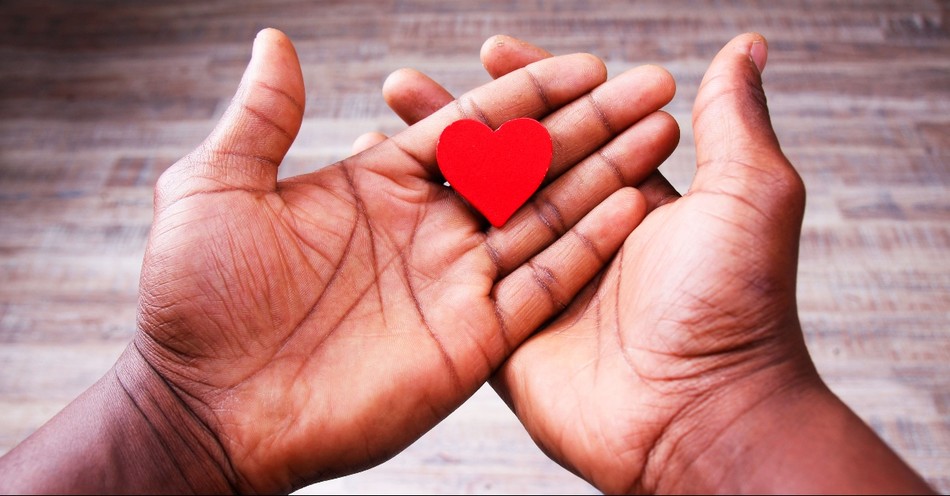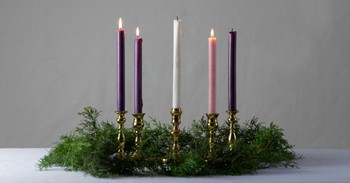Jesus declared to the religious leaders that no one could separate him from his disciples, his “sheep.” He said to them “I give them eternal life, and they will never perish, and no one will snatch them out of my hand.”
No one could steal these men from the Lord. Jesus possessed this authority because, as he also explained, “I and the Father are One” (John 10:27-28,30).
Jesus’ disciples were not standing literally on his hands, and followers today are not carried by a supernatural hand as they go about their business. The image of Christ’s hands here evokes finite ideas suitable to the finite minds of worshipers.
You've probably heard the term, "God has you in the palm of his hand." Let's explore what that means for us today.
What Does God Has You in the Palm of His Hand Mean?
God is Spirit but given human features in Scripture and art so that readers and believers can try to fathom him. “God is Creator of all things [...] and must therefore be much greater than what any physical body can contain.” The Lord is not limited by earthly notions of physicality, but he is often represented in such terms because he is an active God who makes things happen.
Anthropomorphism (the attributing of human characteristics to non-human entities) is a literary device by which “body parts are used figuratively in reference to an attribute or concept regarding God rather than a physical body part” (Ibid.). We simply cannot imagine the Lord as he actually is; the concept is outside of our understanding.
The Lord does not hold us in a pair of actual hands because the reality is even better but impossible to comprehend. We do, however, understand what hands are and what can be done with them or to them.
Nails in Jesus’ Hands
For instance, the same power which held back the waters of the Red Sea also submitted to the agony of crucifixion. The religious leaders were looking for a warrior who would wrap his fingers around the hilt of a sword.
They refused to see the evidence of prophecy, which did not match their image of the Messiah. Pharisees and followers knew Jesus was special; he met many prophetic criteria. But the cross dashed their hopes.
How could a crucified God be powerful? If he had promised to hold us in the palms of those very hands, why was he permitting them to be destroyed?
From the perspective of John 10, prophecy was yet to be fulfilled, but if they had reviewed Isaiah’s words more carefully, they might have realized that Isaiah 49:16 foreshadowed the cross: “Behold, I have engraved you on the palms of my hands.”
God’s hands would be engraved with the wounds of crucifixion, literally, but those mutilated hands also symbolize how Jesus was, indeed, the Messiah Israel was waiting for.
The cornerstone of the gospel is this: that Christ came to obey the will of God. “He did not come to save men first of all; He came to do His Father’s will” (Oswald Chambers, The Love of God).
His very hands are a picture of both submission to the Father and the power of God to overcome every obstacle standing between us and God.
When Jesus’ disciples remembered his wounds, they might also have recalled him saying they could not be snatched out of his hands.
They could associate his wounds with victory over death. They would ultimately realize their enemy was not Rome but death itself, and they had been rescued after all.
We Are Instruments in God’s Hands
Paul David Tripp wrote, “An instrument is a tool that is actively used to change something, and God has called all of his people to be instruments of change in his redemptive hands.”
Those who submit to the Lord’s will are not objectified by the Lord, used as mere “things” to play out roles on a stage. We are invited to yield to his gentle but purposeful Sovereignty, and it is our pleasure and privilege as his people to become instruments for change in the world, to the glory of God.
As Oswald Chambers put it, we are like “a bow and arrow in the hands of an archer. God is aiming at something the saint cannot see, and He stretches and strains, and every now and again the saint says — ‘I cannot stand anymore.’ God does not heed, He goes on stretching till His purpose is in sight, then He lets fly.”
We picture ourselves in God’s hands in a spiritual sense, being directed every day as to how we will glorify him in our workplace, among friends, or at home.
Yet the success of our actions and our own obedience are like the arrows nocked to the string for firing: we rely on a refining work by the Archer, his skill, to be fired in any direction for whatever purpose he deems fit. A yielding servant goes where he or she is sent.
Shaped by God
The Lord is frequently portrayed as an artist, a sculptor. He has shaped us, like clay, into the forms he desires. Rodin’s Hand of God portrays this artistic representation with the bodies of Adam and Eve emerging from marble, still partially embedded in the rock.
Isaiah wrote, “But now, O Lord, you are our Father; we are the clay, and you are our potter; we are all the work of your hand” (64:8). We are his masterpieces, each of us uniquely made and fully known by him. We are loved by the Creator as a masterpiece is loved by its sculptor.
Although God’s palms did not become sticky with clay, we can relate to the intimacy of an artist’s creative process as the Potter lovingly builds a work of art out of a gray lump. The most important part of that process is something earthly art can only suggest: the heart.
How we feel about God holding us in the palms of his hands relates back to our idea of what hands are for: rough work, violence, and slog? Or tenderness, commitment, and service? The posture of one’s heart will inform his or her understanding of the physical imagery.
Are We Protected, Knowing that 'God Has You in the Palm of His Hand'
The Lord’s protection is often portrayed as two massive hands encircling and guarding his little children or lifting them above destruction.
The picture of our Lord holding and shielding us in the palms of his hands persists thanks to music, art, and literature, in addition to scriptural allusions to the hand of God.
He is in all things and works through all things and “in him all things hold together” (Colossians 1:17). Johnny Cash wrote, “I’m going to put it into God’s hands/start living on God’s plans/ [...] I can rest easy now that I’ve put it into God’s hands.
We feel safer when we realize the Lord is not controlling but steering us, both for our good and for a purpose known only to him.
If we can believe those same hands were made flesh in the form of Jesus, who raised them above his head to have nails driven into them, then we can start to reconcile submission with sovereignty: “You hem me in, behind and before, and lay your hand upon me” (Psalm 139:5).
For further reading:
2 Beautiful Reminders from Our Savior’s Nail-Scarred Hands
Photo Credit: ©iStock/Getty Images Plus/Kevin Leah




.jpg)
.jpg)